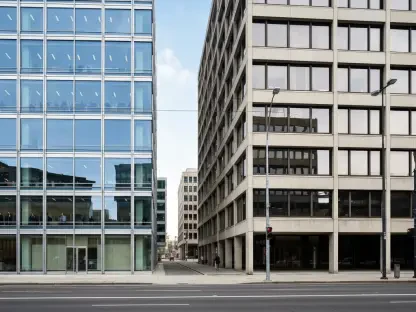The ongoing deliberations over Houston’s sidewalk ordinance revisions have revealed a complex interplay between the city’s long-term urban planning goals and the immediate practical challenges faced by developers and homeowners. Hector Rodriguez, a representative from the city’s planning department, has emphasized that the primary aim of the proposed changes is to simplify the ordinance and address the persistent issue of unconnected sidewalk segments that dot various neighborhoods. Currently, the ordinance mandates that new construction projects either include a sidewalk or require developers to pay a fee to the city. The proposed revisions would introduce exemptions for single-family residential developments under specific conditions. These conditions include deed restrictions that prohibit sidewalk construction, lots that are one acre or larger, infeasibility of sidewalk construction, or the absence of sidewalks on the same block with the site being more than 1,400 feet away from schools, libraries, or churches.
Exemptions and Challenges
Under the proposed changes, single-family residential developments could be exempted from the sidewalk-or-fee requirement, alleviating some of the financial burdens that have been a source of contention. This has garnered support from a number of council members, including Carolyn Evans-Shabazz, Edward Pollard, and Tiffany Thomas. They have argued that the current fees are often higher than the cost of constructing a sidewalk, leading to the creation of isolated “sidewalks to nowhere.” The mandate for either constructing sidewalks or paying a fee has also been criticized for its lack of flexibility, failing to account for varying neighborhood characteristics and specific project-level challenges.
In response to the criticisms, Mayor John Whitmire has instructed the planning department to provide waivers for sidewalk construction requirements in cases where it is technically infeasible or would result in disconnected segments. The Mayor’s directive aims to strike a balance between immediate practical concerns and the city’s broader urban planning objectives. The exemptions, however, have not been universally welcomed. Planning Commission Member Ian Rosenberg has voiced opposition, arguing that even disconnected sidewalks contribute incrementally to a more extensive and coherent sidewalk network over time. Rosenberg believes that maintaining the sidewalk-or-fee requirement, even for single-family homes, could serve a long-term vision for a more walkable city.
Public Consultation and Feedback
The process for revising the sidewalk ordinance will involve a series of community meetings scheduled between October 22 and November 2. These meetings provide a platform for residents to review the proposed changes and offer their feedback. The planning department has organized both in-person and virtual meetings to ensure wide accessibility and engagement. Following these consultations, the Planning Commission will consider the public’s feedback in their session on November 14. Subsequently, the City Council’s Quality of Life Committee will hold a hearing on December 2, setting the stage for a final decision on December 11.
The revisions underscore the importance of public input in shaping policies that directly impact neighborhood livability and connectivity. The meetings aim to gather diverse perspectives to ensure that the final ordinance revisions reflect the community’s needs and preferences. Given the divergent opinions within the city council and among stakeholders, these meetings are expected to be a critical forum for debate and discussion. Residents and advocacy groups alike will have a chance to voice their concerns, making the upcoming public consultation phase a pivotal moment in the ordinance revision process.
Balancing Immediate Concerns and Long-term Goals
One of the most challenging aspects of the proposed revisions to Houston’s sidewalk ordinance is balancing the immediate concerns of developers and homeowners with the city’s long-term urban planning goals. The diverse perspectives highlighted by city officials illustrate a broader debate over how to create a cohesive and connected sidewalk network while addressing practical challenges. The proposed changes aim to simplify the ordinance and provide exemptions that consider specific project-level difficulties, yet the long-term vision for a more walkable city remains a subject of intense debate.
Mayor Whitmire’s directive to waive sidewalk construction requirements in certain situations acknowledges the practical difficulties faced by single-family residential developments. However, opponents like Ian Rosenberg maintain that a piecemeal approach to sidewalk construction could hinder the development of a connected sidewalk network over time. The community feedback gathered during the public meetings will play a crucial role in shaping the final ordinance revisions. The outcome will determine whether the new policies indeed strike a balance between immediate practical concerns and the city’s broader goals for urban connectivity.
Conclusion
The ongoing discussions about revising Houston’s sidewalk ordinance have highlighted the complex balance between the city’s long-term urban planning goals and the immediate challenges faced by developers and homeowners. Hector Rodriguez from the planning department has stated that the main goal of the proposed changes is to simplify the ordinance and tackle the persistent issue of disjointed sidewalk segments in many neighborhoods. Currently, the ordinance requires that new construction projects either build a sidewalk or have developers pay a fee to the city. The proposed revisions aim to introduce exemptions for single-family residential developments under certain conditions. These conditions include deed restrictions that bar sidewalk construction, lots that are one acre or larger, situations where building a sidewalk is not feasible, or the absence of sidewalks on the same block when the site is more than 1,400 feet from schools, libraries, or churches. This revision hopes to better align practical construction needs with the city’s vision for cohesive urban development.









